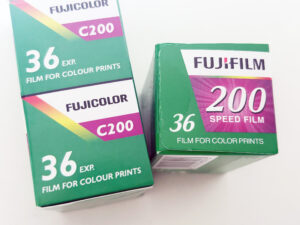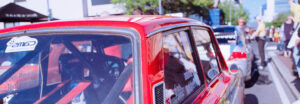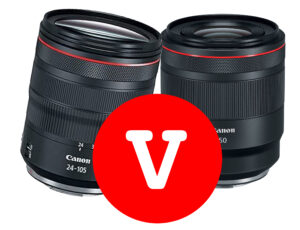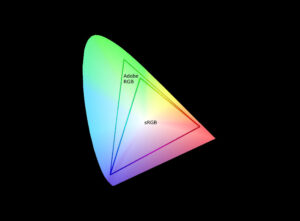Let’s begin with a hard truth: Even seasoned collectors can be deceived by today’s high-quality counterfeit Rolex watches. These aren’t the obvious fakes of yesteryear; they’re sophisticated replicas known as “super clones,” designed to mirror genuine Rolexes in nearly every detail.
Years ago, you could spot a fake Rolex from across the room: cheap quartz movement, sloppy fonts, and a crown logo that looked more like a trident than a coronet. But times have changed. Today’s best fakes—known as super clones—are shockingly good. Alarmingly good. Good enough to fool even experienced collectors on a bad day. Gone are the days when poor quality, crooked lettering, or a ticking quartz movement gave away a counterfeit from across the room.
So this isn’t just a checklist. It’s a conversation. A guide to spotting the subtle signs, understanding the improvements counterfeiters have made, and focusing on the one place they still can’t get right.
What separates a genuine Rolex from a super clone comes down to the smallest of details—many of which are no longer obvious at a glance. Fonts on the dial, the alignment of the rehaut engraving, the glow of the lume, the weight of the bracelet, and the precision of the bezel clicks are all areas where fakes have improved dramatically. However, under close inspection or magnification, tiny flaws still show—slightly fuzzy printing, misaligned text, or the wrong magnification on the date bubble.
What Is a Rolex Super Clone?
A super clone is a premium-grade counterfeit Rolex, meticulously crafted to replicate the appearance and functionality of an authentic model. Manufacturers reverse-engineer genuine Rolex watches to produce these replicas, often using high-quality materials and advanced manufacturing techniques. The goal is to create a watch that not only looks identical but also feels and operates like the real thing.
They’re made using CAD scans of authentic models, quality materials, and sometimes even modified Swiss movements.
You might see:
- Sapphire crystals
- Ceramic bezels
- Solid 904L-grade steel
- Accurate rehaut engravings
- Realistic weight
- Smooth bezel clicks
- Working Glidelock clasps
These fakes are engineered to pass for the real deal at a glance—even under a loupe. So what still gives them away?
Key Differences Between Genuine Rolex and Super Clones
1. Movement Mechanics
At the core of every Rolex is a highly engineered, in-house mechanical movement—an intricate assembly of gears, springs, jewels, and bridges designed not only for precision timekeeping but also for longevity and resilience. Rolex invests years into developing and refining these movements, and they remain one of the most technically advanced calibres in the luxury watch industry.
While super clones can get frighteningly close on the surface—matching the dial design, case shape, and even bracelet weight—they usually falter when it comes to replicating what’s inside. That’s where even the best counterfeiters struggle to keep up.
The movement is the heart of any watch. Genuine Rolex watches utilize in-house movements featuring a free-sprung balance system, regulated by Microstella screws. This design allows for precise timekeeping and durability. In contrast, most super clones use movements with a regulator arm, which is easier and cheaper to produce but less accurate and durable. Even when super clones attempt to mimic the appearance of a free-sprung balance, they often fall short in functionality. In most mechanical watches, timekeeping is adjusted by moving a small regulator arm. This adjusts the length of the hairspring, altering the speed of the balance wheel.
Rolex, however, does something different.
Their balances are free-sprung, which means they don’t use a regulator arm. Instead, Rolex adjusts the timekeeping by changing the mass of the balance wheel using tiny screws, called Microstella nuts, located inside the balance rim. It’s a more stable, shock-resistant, and precise way of regulating time—especially over the long haul.
For trained watchmakers, this is the tell-tale sign. If you open the caseback and see a traditional regulator arm—no matter how nice the rest of the watch looks—it’s not a real Rolex.
2. Dial Details
Authentic Rolex dials are known for their flawless printing, precise font spacing, and sharp markers. Super clones have improved significantly in this area, but under magnification, discrepancies can still be found. Look for inconsistencies in the text, misaligned markers, or uneven lume application.
The dial of a Rolex is where first impressions are made—and where many fakes used to reveal themselves. For years, counterfeiters struggled with incorrect fonts, misaligned hour markers, misshaped logos, and uneven lume application. But now the story is different. Super clones have drastically improved, and in many cases, you’ll need a loupe—and a lot of experience—to tell the difference.
So let’s break down the dial, detail by detail, and explore what to look for when spotting a fake Rolex.
The Rolex Logo and Coronet
At 12 o’clock sits Rolex’s iconic crown logo—the coronet. On an authentic dial, the coronet is:
- Perfectly symmetrical
- Sharply printed or applied, depending on the model
- Aligned flawlessly with the text and indices below it
On super clones, the coronet is often very close. But under magnification, you may spot blurry edges, slight asymmetry, or inconsistent spacing between the points of the crown. Applied coronets (as seen on some Datejust and Day-Date models) may be set unevenly or look slightly off-centre under close inspection.
Font and Text Alignment
This used to be a dead giveaway. On older fakes, the “ROLEX” text might be too bold, too thin, or spaced awkwardly. Today’s best clones have learned. They scan real dials, match font weights, kerning, and spacing almost perfectly.
Still, there are ways to spot flaws:
- On a real Rolex, the printing is ultra-sharp, like it was laser-etched into the dial.
- On a super clone, the font may be nearly correct, but appear slightly fuzzy or “printed on” instead of feeling like part of the surface.
- Look closely at letters like the “O” in ROLEX—it should be a perfect oval, not a circle, and identical across authentic models.
- Compare line spacing: text such as “Superlative Chronometer Officially Certified” should sit at just the right height and distance.
Hour Markers and Hands
Rolex applies its hour markers—whether baton, dot, or Roman numerals—with precision. Markers should be:
- Perfectly aligned with the minute track
- Equal in size, shape, and height
- Evenly spaced with lume centred cleanly within each marker
Super clones often get close but may exhibit:
- Uneven lume application
- Markers that aren’t perfectly upright (especially under magnification)
- Minute hands that extend too far or fall slightly short of the minute track
- Sloppy polishing or a different tone of metal on hands vs markers
3. Cyclops Lens and Date Magnification
The Cyclops lens on a real Rolex magnifies the date by 2.5 times, providing clear readability. Many super clones struggle to achieve this exact magnification, often resulting in a smaller or distorted date display. Additionally, the clarity and alignment of the date within the lens can be telltale signs of authenticity.
On models like the Datejust, Submariner, and GMT-Master II, the date aperture is another tell:
- A genuine Rolex has a perfectly cut date window, with sharp corners and a clean bevel.
- The date font is proprietary—slightly bold, highly legible, and centred flawlessly.
- The Cyclops lens should magnify it exactly 2.5x, with crisp clarity.
On a fake:
- The date may sit too high or too low
- The numbers might be off-centre or misaligned
- The Cyclops might magnify less than 2.5x, or distort the font edges
4. Rehaut Engraving
Modern Rolex watches feature the word “ROLEX” engraved around the inner bezel (rehaut), along with a serial number at the 6 o’clock position. While super clones replicate this feature, they may exhibit slight misalignments, inconsistent font, or shallow engravings that differ from the crispness of genuine models.
5. Lume Quality
Rolex uses Chromalight lume, which emits a distinct blue glow lasting throughout the night. Super clones may use inferior lume that glows green or fades quickly. Uneven application or inconsistent brightness across markers can also indicate a fake.
On an authentic Rolex:
- The lume is applied smoothly and evenly
- All markers and hands glow at the same intensity
- There’s no spillage or overspray
Super clones might use Super-LumiNova or cheaper variants that:
- Glow green instead of blue (especially on older fakes)
- Fade faster
- Glow unevenly—some markers may appear duller than others
- Appear grainy or blotchy up close
Check it in a dark room. If the lume is patchy, weak, or mismatched, be cautious.
6. Case and Bracelet Craftsmanship
Authentic Rolex cases are crafted from 904L stainless steel, known for its corrosion resistance and exceptional finish. The bracelets are solid, with smooth edges and a substantial weight. Super clones may use lower-grade steel, resulting in a lighter weight and less refined finish. Pay attention to the bracelet’s flexibility, clasp mechanism, and overall feel.
7. Serial Numbers and Engravings
While super clones often replicate serial numbers and engravings, they may not match Rolex’s official records. Engravings on genuine Rolex watches are precise and deep, whereas fakes might have shallow or uneven markings. Verifying the serial number with Rolex or an authorized dealer can confirm authenticity. Also, there is the new NFC cards that come with the watch you can scan with your smartphone.
8. The Minute Track and Rehaut Alignment
The minute markers—tiny hash marks circling the edge of the dial—should be:
- Consistently spaced
- Perfectly aligned with both the hands and the engraved rehaut
On genuine models, the engraved “ROLEX” rehaut text (on modern Rolexes) lines up exactly with each minute marker. On fakes, even when well done, the alignment can be just a fraction off—a detail easy to miss unless you know to look.
The Importance of Professional Verification
Given the sophistication of super clones, it’s advisable to have the watch inspected by a certified watchmaker or authorized Rolex dealer. They can open the caseback to examine the movement, verify serial numbers, and assess other subtle details that distinguish a genuine Rolex from a counterfeit.
Ultimately, the one thing counterfeiters haven’t been able to copy convincingly is Rolex’s in-house movement design, particularly the free-sprung balance wheel. While many fakes mimic the appearance of a Rolex calibre, they often contain a standard regulated movement, which tells a trained eye all it needs to know. If you ever get the chance to open the caseback, the movement is where the truth lives.
If you’re buying a Rolex—especially secondhand—be cautious, do your research, and seek advice from professionals or trusted communities. The line between real and fake is thinner than ever, but with the right knowledge, you can still spot the difference.
Distinguishing a genuine Rolex from a super clone requires a keen eye and knowledge of specific details. While super clones have become increasingly convincing, understanding the nuances of Rolex craftsmanship can help protect your investment. Always purchase from reputable sources, request authentication documents, and when in doubt, seek professional verification.










































































